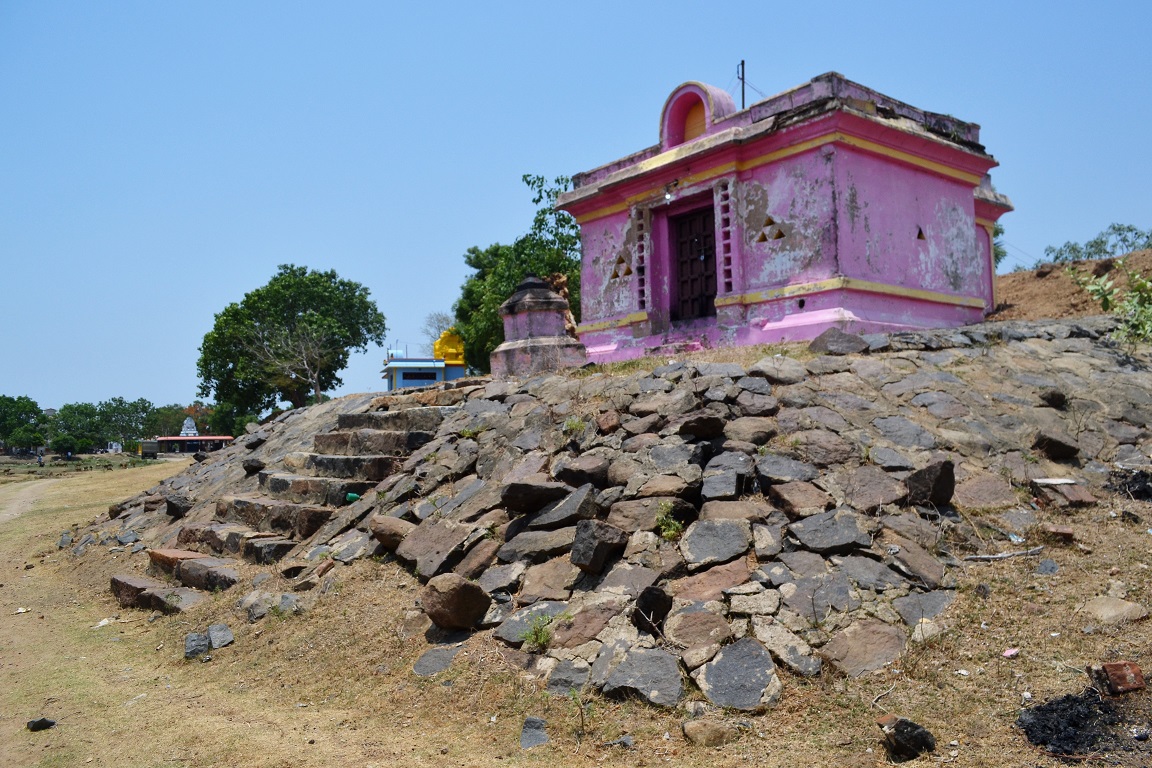
- Home
- News
- Analysis
- States
- Perspective
- Videos
- Education
- Entertainment
- Elections
- Sports
- Features
- Health
- Budget 2024-25
- Business
- Series
- Bishnoi's Men
- NEET TANGLE
- Economy Series
- Earth Day
- Kashmir’s Frozen Turbulence
- India@75
- The legend of Ramjanmabhoomi
- Liberalisation@30
- How to tame a dragon
- Celebrating biodiversity
- Farm Matters
- 50 days of solitude
- Bringing Migrants Home
- Budget 2020
- Jharkhand Votes
- The Federal Investigates
- The Federal Impact
- Vanishing Sand
- Gandhi @ 150
- Andhra Today
- Field report
- Operation Gulmarg
- Pandemic @1 Mn in India
- The Federal Year-End
- The Zero Year
- Premium
- Science
- Brand studio
- Newsletter
- Home
- NewsNews
- Analysis
- StatesStates
- PerspectivePerspective
- VideosVideos
- Entertainment
- ElectionsElections
- Sports
- Features
- BusinessBusiness
- Premium
- Loading...
Premium - India-Canada ties

NOTA: When caste mars the protest vote

The Adanjiamman temple had been closed for several years. In 2013, a group of Leftist and dalit activists forced it open to ensure that dalits be granted entry. Things were smooth for nearly a year before the temple at Nathanallur near Wallajahbad, in Kancheepuram district of Tamil Nadu, shut again. In the villages of Tamil Nadu, it is common to find temples dedicated to caste groups....
The Adanjiamman temple had been closed for several years. In 2013, a group of Leftist and dalit activists forced it open to ensure that dalits be granted entry. Things were smooth for nearly a year before the temple at Nathanallur near Wallajahbad, in Kancheepuram district of Tamil Nadu, shut again.
In the villages of Tamil Nadu, it is common to find temples dedicated to caste groups. Some temples are deigned common to all, and the temple for Adanjiamman, a folk deity, is one such temple.
Around 20 years ago, as the relationship between vanniyars — a numerous intermediate caste group and pariars — a dalit caste group — deteriorated, vanniars started objecting to pariars coming to the Adanjiamman temple.”Dalits were using the temple pond, too. They would wash themselves as well as their cattle. How could we allow that,” asks Gomathi (name changed on request), a vanniyar woman.
Gomathi wasn’t particularly enthused by the elections. She voted NOTA.

Partymen belonging to the PMK (Pattali Makkal Katchi), representing her caste group, asked her to vote for the AIADMK but she says they had not fulfilled any promises. The DMK hasn’t done any better either. “Someone told me there is something called NOTA and I pushed that button,” a frustrated Gomathi said dismissively. “Why should I vote for a pariar candidate,” she wondered.
Wallajahbad is part of Kancheepuram constituency, reserved for scheduled caste (SC). Some 22,000 NOTA votes were polled here, the highest among the SC constituencies in the state.
Though seen superficially as a vote of no-confidence against all the candidates or parties contesting in any constituency, the NOTA option has often been exercised by voters based on caste considerations. Studies have shown a correlation between NOTA votes and SC constituencies in the past. Either upper caste voters do not want to vote for an SC candidate, or a dalit voter, because of caste conflicts, wishes to lodge a protest in a reserved constituency against the inability of the system to address their concerns.
This Lok Sabha election, across the country, the relationship between NOTA and SC constituencies has continued, with reserved constituencies polling higher than the national average for NOTA. In at least four constituencies in Bihar, NOTA votes were higher than the winning margin of candidates.
In 2014, when NOTA was first introduced in the Lok Sabha elections, DMK candidate and former telecom minister A Raja contested from Nilgiris – a reserved constituency, where some 46,559 NOTA votes were polled – the highest in Tamil Nadu then. One reason attributed to the surge in NOTA votes was the cloud of the 2G scam associated with Raja. This year, with Raja contesting from the same constituency, Nilgiris continued the trend with nearly 18,000 NOTA votes.
In four SC constituencies – Tenkasi, Nagapattinam, Tiruvallur and Nilgiris — NOTA votes polled were fewer than in 2014. In three others – Chidambaram, Kancheepuram and Villupuram – there has been an increase. The latter three are located in the north with significant vanniyar population and a strong PMK presence.
Sriperumbudur and Coimbatore – both open seats — topped with regard to NOTA. Though caste does not seem to have mattered here, these highly industrialized belts with a concentration of small and medium units were likely registering their protest against GST and demonetization, say observers.
When party affiliations trump caste
Meanwhile, Sujatha (name changed), who was standing next to Gomathi in Nathanallur, said vanniyars have their own temples, but not dalits. The menfolk don’t allow it, she adds. “I voted for the AIADMK since my husband told me to, although I wanted to vote for the DMK,” she said.
In the dalit colony of Nathanallur, women said they did not know about NOTA. “We voted for DMK although we are not thrilled just because someone from our caste is contesting the election,” says Kuruvamma.
- Vote of disapproval
- NOTA (None of the above) is an option accorded to voters to reject all the contesting candidates.
- In 2013, the Supreme Court ordered the Election Commission to provide a NOTA option to voters, and asked it to include it as a button on EVMs.
- Before electronic voting machines (EVM), voters had to fill out a form in the presence of a presiding officer, who would then note it down separately.
- The SC ruled that this did not protect the identity of the voter, and made the process easier by introducing the NOTA option.
- The NOTA option was first used in the 2013 Assembly elections in five states.
- Other countries that use the NOTA option include Brazil, Spain, Sweden, France, Chile and parts of USA among others.
Some 25 km away is Ravuthanallur Kandigai, in Uthiramerur. For nearly 20 years, there has been a conflict between Christians belonging to the naidu community and dalits who have converted to Christianity. The dalits who were disallowed entry into the Roman Catholic church built their own church. The naidu caste group complained to the diocese that the new church should not be recognized.
Though heartburn continues among members of both communities, few voted NOTA, say villagers. At Ravuthanallur, the DMK’s secular credentials seem to have played a role and voters chose DMK, they add. “Voting for NOTA would have wasted our votes and we didn’t want to do that,” says Amalorpa Mary who belongs to the naidu community.
Lure of alternatives dims enthusiasm for NOTA
Thirty kilometres from Ravuthanallur Kandigai is Acharapakkam where there is a samuthavapuram, a novel concept initiated by M Karunanidhi, former chief minister and DMK leader. A samathuvapuram – which means a settlement that promotes equality – is built by the government that constructs houses and hands them over to members of various caste groups, creating mixed neighbourhoods. Karunanidhi came up with samuthavapuram as a means of social engineering to counter caste clashes that rocked Tamil Nadu in the 1990s.
At the Acharapakkam samathuvapuram, most of the grateful residents are DMK supporters. First-time voters, however, tend to lean towards new political outfits, such as Kamal Haasan’s Makkal Needhi Maiam and Tamil nationalist party, Naam Thamizhar Katchi, as they are looking for alternative politics to the Dravidian parties. “I wanted to vote for Makkal Needhi Maiam but their candidate’s nomination papers were rejected. Therefore I voted for NOTA,” says Karthik, a college student living at the Acharapakkam samathuvapuram.

